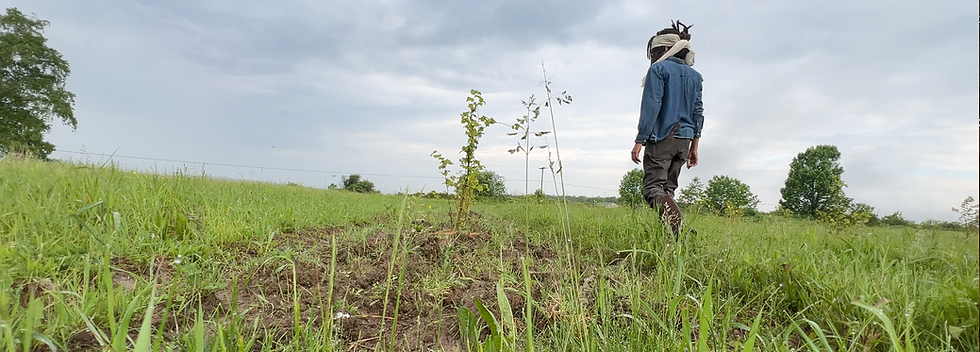
CHRF Agroforestry Overview
Corbin Hill Road Farm
Agroforesty
Fall 2021 - Spring 2025 & Beyond
Agroforestry Plan
Corbin Hill Road Farm is establishing a multi-phase agroforestry system designed to regenerate soil, build ecological resilience, and create long-term wealth. The plan integrates hazelnuts, chestnuts, black locust, black walnut, truffle production, elderberries, and black currants within a diversified perennial alley-cropping design. Each phase builds on the last, moving from small-scale trials to a fully established agroforestry enterprise rooted in shared ownership and lasting stewardship.
Pilot Trial Zone (2021)
The work began with a small experimental zone to study soil conditions, water flow, microclimates, and species compatibility.
This early plot served as a learning site to test methods, track growth patterns, and refine future layout decisions before scaling up.
Prep Phase (September 2024)
Before major plantings, the full field system was prepared through:
-
Cover cropping across all fields and proposed rows
-
Assessing moisture retention and compaction
-
Mapping shade, slope, and drainage zones
-
Establishing initial fencing and access points
This preparation created the foundation for healthy root development and long-term soil regeneration.
Phase 1 — Hazelnut & Chestnut Establishment (May 2025)
Plantings include:
-
100 hazelnut trees inoculated with truffle spores
-
651 chestnut trees arranged in perennial alley rows
This phase forms the core backbone of the farm’s perennial production, establishing long-lived nut systems that anchor future intercropping, carbon storage, and high-value harvests.
Phase 2 — Black Locust (October 2025)
Phase 2 expands the system with black locust rows, a key species for:
-
Nitrogen fixation
-
Supporting pollinators
-
Future coppice cycles
-
Providing natural fence posts and structural wood
These fast-growing trees enrich the soil, stabilize the orchard environment, and set the stage for agroforestry layers in the next phase.
Phase 3 — Integrated Alley Cropping (Spring 2026)
This phase completes the full alley-cropped design.
Plantings include:
-
Black walnut
-
Intercropped black currants
-
Intercropped elderberries
-
Biodiversity companion trees
Phase 3 introduces multi-strata production, combining timber, nuts, fruits, and biodiversity plantings in one harmonized system. This creates:
-
Continuous canopy growth
-
Resilient understory economies
-
Strong long-term ecological and financial returns


